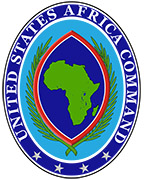Written by Staff Sgt. V. Michelle Woods
27th Public Affairs Detachment
 Monrovia, Liberia – During the American Revolution, George Washington used part of the Continental Army’s scarce budget to purchase quinine for the treatment of malaria in his troops.
Monrovia, Liberia – During the American Revolution, George Washington used part of the Continental Army’s scarce budget to purchase quinine for the treatment of malaria in his troops.
According to Professor Dale Smith, a military medical historian at the Uniformed Services University of the Health Sciences, the U.S. military counted more than a half-million cases of malaria during World War II.
“This will be a long war, if for every division I have facing the enemy, I must count on a second division in the hospital with malaria, and a third division convalescing from this debilitating disease,” said Gen. Douglas MacArthur, commander of Allied Forces in the Pacific Theater during World War II.

In 2003, about 300 Marines deployed to Liberia for a military peacekeeping operation however the mission failed due to 80 cases of malaria within the first three weeks.
In October 2014, service members returned to Liberia for Operation United Assistance, an operation supporting the U.S. Agency for International Development-led efforts to contain the Ebola virus outbreak in western Africa. The fight against Ebola, however, poses a significantly smaller threat than malaria.

“Right now, based on current statistics, someone who is unprotected from malaria has a 50 percent chance per month of getting malaria in Liberia,” said Capt. Neel Shah, physician and Barclay Training Center aid station officer in charge, Joint Forces Command – United Assistance. “Mathematically, statistically, in every way you look at it, malaria is the biggest killer.”


